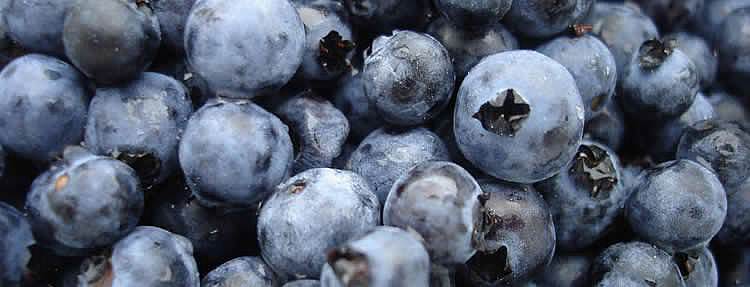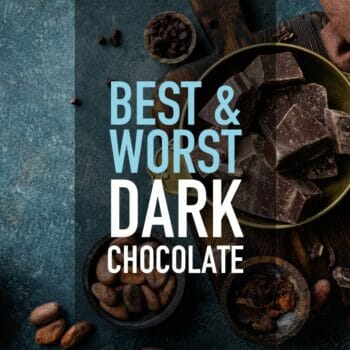Hacks for Healthier Cooking
Learning to cook healthier isn’t as easy as it seems, especially for those who have been cooking a certain way for years.
My mother, for example, cooked the way her mother did, and my grandma cooked the way her mother did, and so on…
Although, they all made delicious food, it wasn’t exactly the healthiest.
I love to cook healthy food, and my experience comes from trial & error and research.
1. Cauliflower Mash

I love mashed potatoes! But all that starch, butter, and milk equal a lot of calories. I still eat mashed potatoes, but most of the time, I use cauliflower instead.
Here’s my easy recipe:
- Boil one head of cauliflower until tender.
- Drain water, add salt, pepper, 1 tablespoon of Quinoa flour and a tablespoon of real butter.
- Mash using a stick blender or hand mixer until creamy.
- Add a little more Quinoa flour if not thick enough. Serve.
The Difference?
1 cup of mashed potatoes = 237 calories
1 cup of cauliflower mash = 85 calories
2. Peanut Butter Milk Shake

Who doesn’t love a milkshake on a hot day or as a creamy treat? Who loves 800+ calories in one drink? Not me!
Here’s my recipe for a peanut butter milkshake that’s guilt-free.
(I use a Ninja Blender to make mine but any good blender will do.)
- In a blender cup: Place one medium, very ripe frozen banana (I keep a bag in the freezer),
- 1 tablespoon of all-natural salted peanut butter,
- 1 teaspoon of vanilla,
- 2 ice cubes
- fill (about 1 cup) with the milk of your choice. (I use reduced-sugar almond milk.)
- Blend until creamy.
- Serve.
The Difference?
16 fluid ounce traditional peanut butter milkshake = 800-900 calories
My 16 fluid-ounce peanut butter milkshake = 240 calories
3. Scrambled Eggs

Instead of eating scrambled eggs the traditional way with toast and bacon, this hack will turn them into a highly nutritious way to start your day.
Here’s what to do.
- Sauté about 3 cups of your favorite vegetables in 1 teaspoon of olive or coconut oil; I use veggies like mini sweet peppers, onion, mushrooms, yellow squash, cherry tomatoes, and kale. Mix it up each day for variety.
- Season with garlic salt, and pepper.
- Scramble in 3 large eggs and cook until eggs are set.
- Serve.
The Difference?
Scrambled eggs with 3 eggs, 2 slices of whole-wheat toast, and 3 strips of bacon = 610 calories
Scrambled eggs with 3 eggs, 1 cup of kale, 1/2 cup peppers, 1/2 cup onion, 1 cup mushrooms = 374 calories + a lot more vitamins and minerals!
4. Kale & Spinach

Boost the nutrition of many recipes by adding chopped kale or spinach to them.
Quick kale tip: De-stem your kale first. This makes kale easier to eat and cuts down on the gas sometimes associated with this nutritious green leaf. I prefer lacinato kale.
Add to Suggestions:
- Chilli
- Hamburger patties
- Lasagna
- Soups
- Scrambled eggs
- Salads
- Marinara sauce
- Stir Fry
The Difference?
1 cup of kale adds: Fiber calcium, potassium, iron, 133% RDA Vitamin A, 133% RDA Vitamin C, and much more.
1 cup of spinach adds: Calcium, iron, 56% RDA Vitamin A, 14% RDA Vitamin C and much more.
5. Wild Blueberries

Blueberries can boost the nutrition of a lot of foods, from smoothies to brownies.
But, did you know that simply using frozen wild blueberries instead of the cultivated variety adds even more antioxidants?
Plus, they have a lot more flavor.
The difference?
100g of Cultivated Blueberries contains an ORAC rating of 4469.
100g of Wild Blueberries contain an ORAC rating of 9621, which is almost double!
6. Raw Almonds

Raw almonds make a great snack, and they can also be used to make healthier and more nutritious thick sauces.
I use them to make an Alfredo sauce like so:
- Using a high-speed blender, blend a 1/2 cup of raw almonds and 1/2 cup water until it forms a thick white paste.
- Add 2 cloves of fresh garlic and 1 cup water and blend again.
- Pour sauce into a saucepan, then add 1/4 cup grated parmesan cheese and salt to taste.
- Cook over medium heat until it thickens. (If it gets too thick add more water.)
- Serve over your favorite pasta.
The Difference?
1 cup of traditional Alfredo sauce = 900 calories
1 cup of raw almond Alfredo = 260 calories.
7. Pasta alternatives

I love pasta, but it is packed with calories. The majority of the time, I use these pasta alternatives.
- Spaghetti squash – Cut in half, Bake at 375 in the oven face down in a shallow pan of water for 45 minutes. Remove flesh with a fork.
- Zucchini Squash – Use a spiral slicer to cut the squash into pasta ribbons and boil for about 5 minutes until tender.
- Sweet Potato – Use a spiral slicer to cut the sweet potato into pasta ribbons and boil for about 5 minutes until tender.
The Difference?
1 cup of traditional spaghetti pasta cooked = 200 calories
1 cup of spaghetti squash = 42 calories
8. Chia Seed Pudding

Love pudding type desserts? This one is easy, nutritious, and delicious.
- Combine 1 cup almond milk, 1 medium mashed ripe banana, 1 teaspoon vanilla, 2 tablespoons chia seeds.
- Stir, cover, and refrigerate overnight.
- Stir and serve.
The Difference?
1 cup traditional vanilla pudding = 260 calories
1 cup chia seed pudding = 130 calories, plus chia seeds are very nutritious.
9. Turkey

Using ground turkey instead of ground beef saves a lot of calories and delivers the protein you need. It can be swapped for beef in most recipes.
Suggestions:
- Chilli
- Tacos
- Hamburgers
- Stuffed peppers
- Casseroles
- Meatballs
- Meatloaf
The Difference?
A quarter-pound beef patty = 307 calories, 20 grams of fat
A quarter-pound turkey patty = 153 calories, 11 grams of fat
10. Greek Yogurt

Some of the tastiest recipes call for sour cream, but you can replace the sour cream with plain Greek yogurt and the dish will be equally as delicious.
Greek yogurt is also rich in protein for all the macro counters out there.
Suggestions:
- Dips
- Salad dressings
- Tacos, fajitas, and all Mexican food
- Baked Potatoes
- Chili topping
- Creamy soups
- Mashed potatoes or Cauliflower Mash featured above.
The Difference?
1 cup of sour cream = 492 Calories
1 cup Greek Yogurt (full fat) = 190 Calories
See my spinach dip recipe using Greek yogurt instead of sour cream.
Making small changes to your cooking habits can have a big impact on your intake of calories, vitamins, and minerals.
What’s great about these hacks is that your portion size isn’t changing, but your calorie amounts are!
Over the year, cutting just 300 calories per day equates to 109,500 calories a year or 31 pounds of fat.


 How to create macro meal plans (quickly) using ChatGPT
How to create macro meal plans (quickly) using ChatGPT Calorie Deficit Meal Planner
Calorie Deficit Meal Planner Dark Chocolate: The Best and Worst Brands
Dark Chocolate: The Best and Worst Brands Macro Friendly Family Dinners
Macro Friendly Family Dinners The Best Plant-Based Burgers: Brands to Choose and Avoid
The Best Plant-Based Burgers: Brands to Choose and Avoid